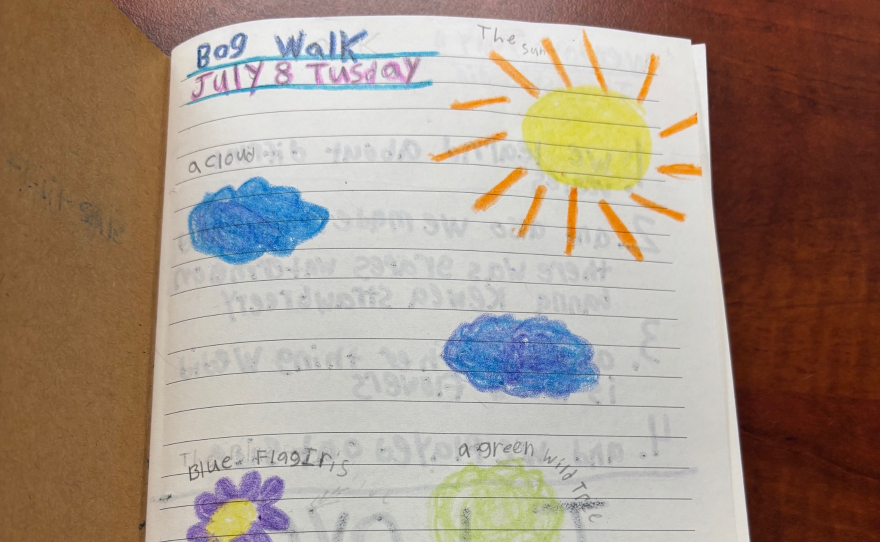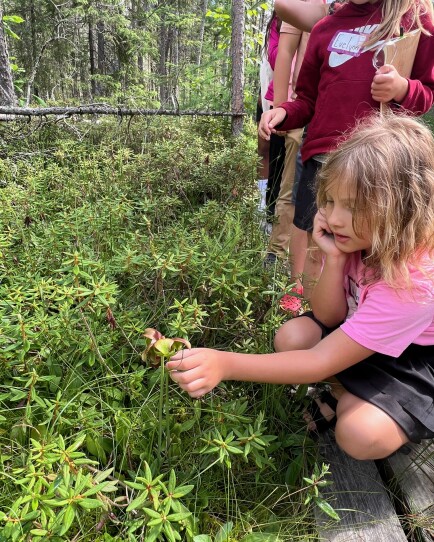Long Lake Conservation Center near Palisade
This report is brought to you by Hailey and the campers from the Big Sandy Water Institute who visited Long Lake on July 8 and 9.
“We had some of the best weather of the summer with a sunny high of 81 degrees and a low of 51.
“This has been the summer of woodchucks, also known as groundhogs or whistle pigs. There have been daily sightings of these large members of the squirrel family. This is considerably more than normal. We noticed that, unlike squirrels, they are pretty skittish and run to safety if they are spotted.
“Red-headed Woodpecker sightings have been more frequent as well. While we’ve seen more of these, sightings of other woodpecker species have decreased.
“We have noticed that there are A LOT of goldenrod galls. In one small section, there were 11 galls, including one stalk that had two.
“The fawns are growing quickly, having nearly doubled in size since birth. Their spots are still there, but beginning to fade. One of the Long Lake naturalists saw a small buck with spike antlers.
“Our taste buds are happy to report the season’s first wild raspberries and strawberries - delicious summer treats.
“Other sightings include: blooming water lilies, pointed leaf tree foils are starting to bloom, doe and fawn tracks, snails, Ovenbirds, Osprey and woodpeckers, but not a lot of bugs.
“We had a great time exploring nature and we want to remind everyone to unplug, get outside and LIVE CONNECTED!”
Bell Museum summer camp at the North Central Research and Outreach Center in Grand Rapids
Charlie Mitchell near Marine on St. Croix
“Good morning John and Heidi,
“Other than the wildfire smoke, it’s been a beautiful summer week here on the St. Croix River. On Saturday, we had a lovely 6-mile canoe down the St. Croix from Osceola to the Log House Landing. We went past the heron rookery, which is now empty of chicks and suspiciously quiet compared to the last time I went past.
“It was a great chance to see damselflies, dragonflies, and butterflies! I’m still learning my insect identifications, but we saw some American rubyspot damselflies and 12-spotted skimmer dragonflies.
“The American Rubyspot damselflies have a blood-red spot on their wings near where the wing meets the thorax, which is how I recognize them. The 12-spotted skimmers have twelve black spots on their wings, and the males have an additional 8 white spots.
“Otherwise, the swamp milkweed and blue vervain are blooming, red baneberry berries are ripe, and the sumac seeds are starting to redden.
“This is Charlie Mitchell, going hither and thither on the St. Croix River!”
Chad Kaddatz’s class at Little Falls Middle School
During the summer months, Chad’s class of middle school science students submit photos of their nature observations to the class Instagram page at little_falls_phenology. Here are some of their highlights from this week.
What have you seen out there? Let us know: email us at comments@kaxe.org or text us at 218-326-1234.
That does it for this week! For more phenology, <b>subscribe</b> to our Season Watch Newsletter or visit the Season Watch Facebook page.
Funding for this project was provided by the Minnesota Environment and Natural Resources Trust Fund as recommended by the Legislative-Citizen Commission on Minnesota Resources (LCCMR).












